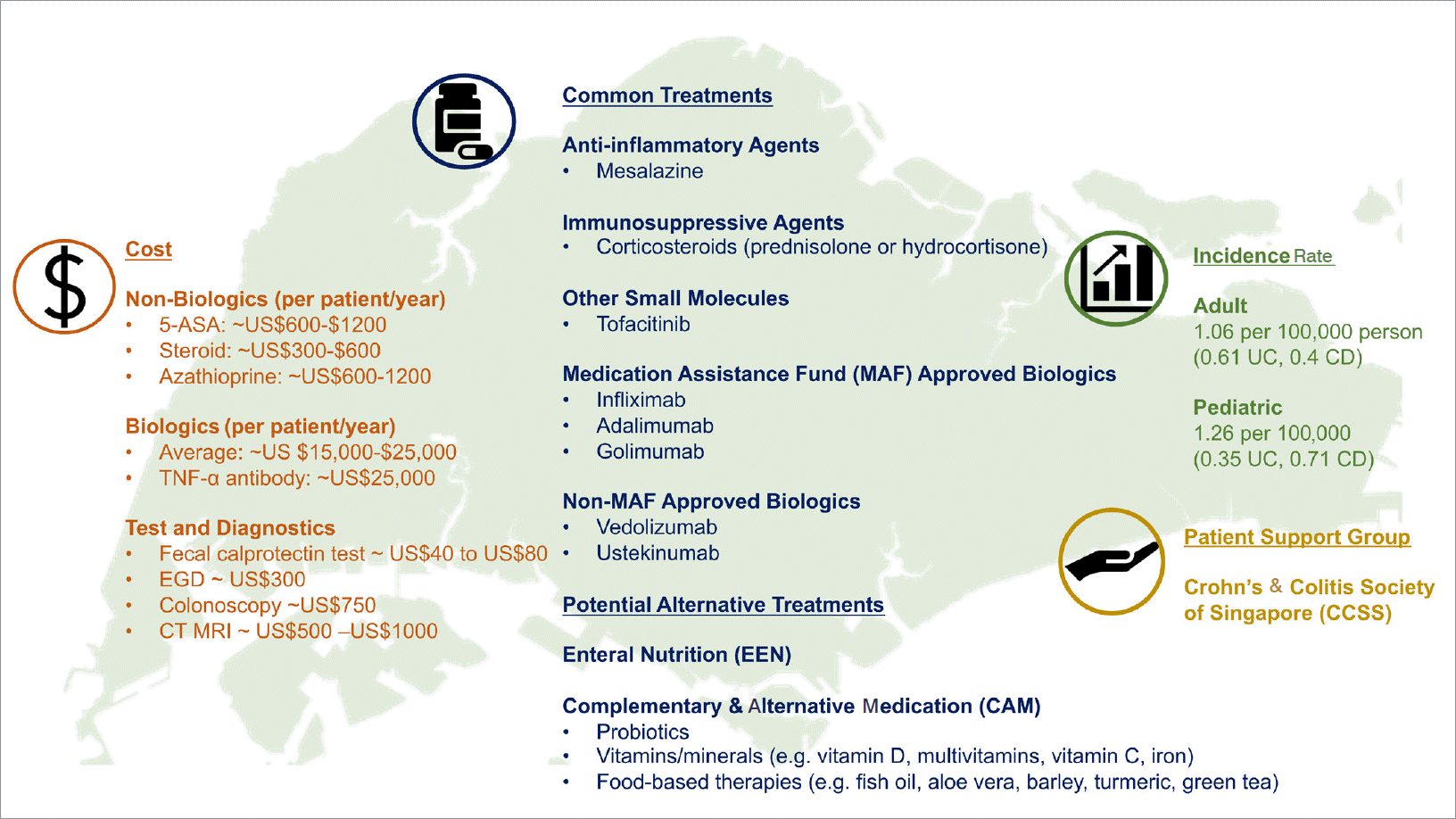1. Molodecky NA, Soon IS, Rabi DM, et al. Increasing incidence and prevalence of the inflammatory bowel diseases with time, based on systematic review. Gastroenterology. 2012; 142:46–54.

2. Cosnes J, Gower-Rousseau C, Seksik P, Cortot A. Epidemiology and natural history of inflammatory bowel diseases. Gastroenterology. 2011; 140:1785–1794.

3. Coward S, Clement F, Benchimol EI, et al. Past and future burden of inflammatory bowel diseases based on modeling of population-based data. Gastroenterology. 2019; 156:1345–1353.

4. Santiago M, Magro F, Correia L, et al. What forecasting the prevalence of inflammatory bowel disease may tell us about its evolution on a national scale. Therap Adv Gastroenterol. 2019; 12:1756284819860044.

5. Olfatifar M, Zali MR, Pourhoseingholi MA, et al. The emerging epidemic of inflammatory bowel disease in Asia and Iran by 2035: a modeling study. BMC Gastroenterol. 2021; 21:204.

6. Benchimol EI, Mack DR, Guttmann A, et al. Inflammatory bowel disease in immigrants to Canada and their children: a population-based cohort study. Am J Gastroenterol. 2015; 110:553–563.

7. Ng SC. Emerging trends of inflammatory bowel disease in Asia. Gastroenterol Hepatol (N Y). 2016; 12:193–196.
8. Ng SC, Zeng Z, Niewiadomski O, et al. Early course of inflammatory bowel disease in a population-based inception cohort study from 8 countries in Asia and Australia. Gastroenterology. 2016; 150:86–95.

9. Ng SC, Kaplan GG, Tang W, et al. Population density and risk of inflammatory bowel disease: a prospective population-based study in 13 countries or regions in Asia-Pacific. Am J Gastroenterol. 2019; 114:107–115.

10. Ng WK, Wong SH, Ng SC. Changing epidemiological trends of inflammatory bowel disease in Asia. Intest Res. 2016; 14:111–119.

11. Kaplan GG, Windsor JW. The four epidemiological stages in the global evolution of inflammatory bowel disease. Nat Rev Gastroenterol Hepatol. 2021; 18:56–66.

12. Swarup N, Nayak S, Lee J, et al. Forming a support group for people affected by inflammatory bowel disease. Patient Prefer Adherence. 2017; 11:277–281.

13. Shamdasani J. Inflammatory bowel disease, which increases risk of colon cancer, is on the rise. The Straits Times;Singapore: 2018.
14. GBD 2017 Inflammatory Bowel Disease Collaborators. The global, regional, and national burden of inflammatory bowel disease in 195 countries and territories, 1990-2017: a systematic analysis for the Global Burden of Disease Study 2017. Lancet Gastroenterol Hepatol. 2020; 5:17–30.
15. Ong C, Aw MM, Liwanag MJ, Quak SH, Phua KB. Rapid rise in the incidence and clinical characteristics of pediatric inflammatory bowel disease in a South-East Asian cohort in Singapore, 1994-2015. J Dig Dis. 2018; 19:395–403.

16. Chu HP, Logarajah V, Tan N, Phua KB. Paediatric inflammatory bowel disease in a multiracial Asian country. Singapore Med J. 2013; 54:201–205.

17. Snapper SB. Very-early-onset inflammatory bowel disease. Gastroenterol Hepatol (N Y). 2015; 11:554–556.
18. Yanagi T, Mizuochi T, Takaki Y, et al. Novel exonic mutation inducing aberrant splicing in the IL10RA gene and resulting in infantile-onset inflammatory bowel disease: a case report. BMC Gastroenterol. 2016; 16:10.

19. Ong F, Seah Lee W, Lin C, et al. Complementary and alternative medicine (CAM) practices and dietary patterns in children with inflammatory bowel disease in Singapore and Malaysia. Pediatr Neonatol. 2018; 59:494–500.

20. Huang JG, Aw MM. Pediatric inflammatory bowel disease in Asia: epidemiology and natural history. Pediatr Neonatol. 2020; 61:263–271.

21. Ong C, Lim PT, Logarajah V, et al. Exclusive enteral nutrition with concomitant early thiopurine use was effective in maintaining steroid-free remission in a Southeast Asian cohort of hildren with Crohn’s disease. BMC Gastroenterol. 2018; 18:185.
22. Wei SC. Differences in the public medical insurance systems for inflammatory bowel disease treatment in Asian countries. Intest Res. 2016; 14:218–223.

24. Crooks B, Barnes T, Limdi JK. Vedolizumab in the treatment of inflammatory bowel disease: evolving paradigms. Drugs Context. 2020; 9:2019–10-2.

25. Shim HH, Kong SC, Ong WC, Lim TG, Chan PW. P381 Use of ustekinumab in Crohn’s disease: Singapore largest single-centre experience. J Crohn Colitis. 2020; 14 Suppl 1:S357.

26. Gan REL, Ng CKY, Ong WC, et al. Healthcare and medication utilisation in Singapore adult inflammatory bowel disease patients receiving immunomodulators and biologics. J Crohn Colitis. 2018; 12 Suppl 1:S284–S285.
27. Halfvarson J, Cummings F, Grip O, Savoye G. Inflammatory bowel disease registries for collection of patient iron parameters in Europe. World J Gastroenterol. 2018; 24:1063–1071.

28. Larsen L, Jensen MD, Larsen MD, et al. The Danish National Registry for biological therapy in inflammatory bowel disease. Clin Epidemiol. 2016; 8:607–612.

29. Min Ho PY, Hu W, Lee YY, et al. Health-related quality of life of patients with inflammatory bowel disease in Singapore. Intest Res. 2019; 17:107–118.

30. Ng SC, Tang W, Ching JY, et al. Incidence and phenotype of inflammatory bowel disease based on results from the Asiapacific Crohn’s and colitis epidemiology study. Gastroenterology. 2013; 145:158–165.






 PDF
PDF Citation
Citation Print
Print



 XML Download
XML Download